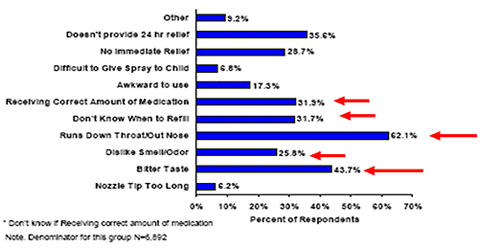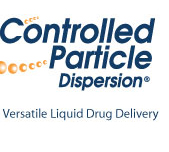Many patients who use nasal spray bottles to administer prescription drugs do not get the intended result or relief. Nasal passages are complex structures to navigate; drugs administered by nasal spray bottles and inhalers only penetrate a small percentage of the nasal cavity. Aqueous spray bottles have mean droplet sizes of approximately 50�m – too large to effectively penetrate the nasal cavity. Nebulizers produce droplet sizes of less than 5�m resulting in lung deposition These devices do not deliver formulations to the most effective region – past the nasal vestibule into the upper reaches of the nasal cavity.
Traditional spray bottles are limited to one specific delivery configuration. Accommodating this limitation often translates into extra formulation research or serious compromises which negatively impact your costs and pipeline.
Spray Bottles often have poor compliance
Up to 90% of the drug delivered using by spray pumps is deposited in the anterior chamber of the nasal cavity then quickly cleared and swallowed. Doses are not consistent due to a poor user interface and variable spray characteristics. All of these factors lead to poor prescription refill and weak brand loyalty.
In a 2007 poster at AAAAI, Dr. Eli Meltzer presented the results of a spray bottle compliance study of over 5,000 patients. Figure 1 shows the reasons patients discontinued use of nasal spray prescriptions. Five of the top reasons cited are not issues with Controlled Particle Dispersion nasal delivery technology.

Figure 1. Reasons Patients Discontinued Use of Spray Bottle (study by Meltzer, et. al. 2007)
Read how Controlled Particle Dispersion� technology overcomes many of the obstacles associated with spray pumps and nebulizers.







